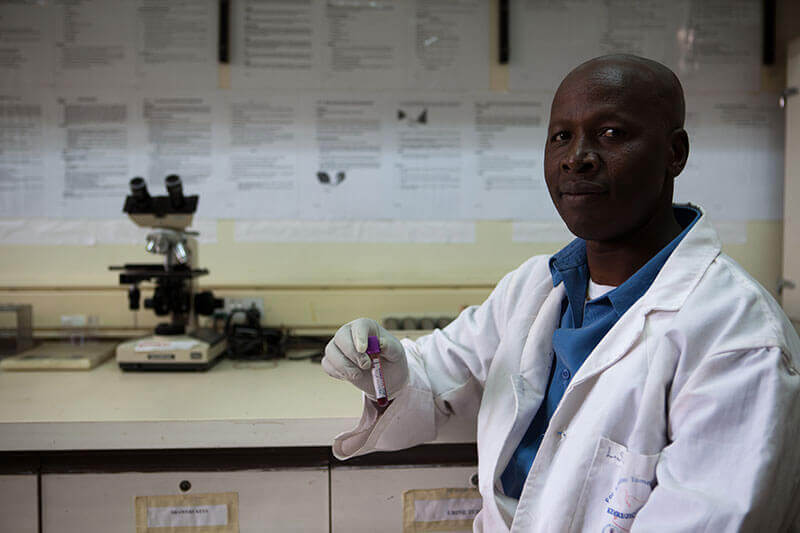Claire WingfieldPATH
Claire Wingfield is a Product Development Policy Officer within the Advocacy and Public Policy Department at PATH, a global nonprofit dedicated to ending health inequity.
In this guest post, Claire Wingfield—product development policy officer at PATH—writes about a new paper she developed for the GHTC that outlines key challenges and solutions facing research and development (R&D) for diseases of poverty.
In April 2012, a World Health Organization (WHO) working group released a report outlining recommendations to improve the coordination and financing of R&D targeting the health needs of low- and middle-income countries (LMICs). The recommendations were hotly debated at last year’s World Health Assembly, but did not have enough support among WHO Member States to pass. A new resolution will be considered at this year’s World Health Assembly, being held this week in Geneva.
In an effort to inform this and other global debates, the GHTC has released a paper providing new insights from nonprofit product development organizations (NPPDs) working to advance R&D for poverty-related and neglected diseases and conditions. NPPDs are nongovernmental organizations that partner with the public, philanthropic, and private sectors to develop technologies—including diagnostics, drugs, devices, vaccines, and microbicides. NPPDs were established to accelerate R&D and improve access to products that would not be available otherwise for commercial reasons.
This paper provides examples of how NPPDs approach product development for diseases and conditions prevalent in LMICs, as well as outlines the key challenges they face. We surveyed a cross-sampling of NPPDs to capture their perspectives on the gaps in the current global pipeline, key challenges as technologies advance through the pipeline, and potential solutions to solving those challenges.

We found that NPPDs play a vital role in bringing together the fragmented resources and expertise of the various sectors involved in neglected disease R&D—not only by developing and delivering health products that would not be available otherwise, but also by improving scientific understanding for many of these conditions. For example, the surveyed NPPDs reported contributing to the development of more than 450 technologies across neglected and infectious diseases, as well as maternal, newborn, and child health, and sexual and reproductive health conditions.
Despite this progress, NPPDs cited several significant challenges that hinder their work. Not surprisingly, funding was the most commonly cited challenge. NPPDs noted that there are too few funders investing too few resources in R&D for neglected diseases and poverty-related conditions. As a result of a relatively small number of funders, shifts by donors can have significant effects. For example, a cut of just 10 percent by the National Institute of Health—the largest funder of R&D for LMICs—would have a disproportionately large impact on the overall funding picture.
Another main challenge is a lack of consistent regulatory requirements and limited capacities of national regulatory authorities, which NPPDs cited as major contributors to delays and increased costs. NPPDs noted that each delay increases the complexity, duration, and cost of conducting research targeting the health needs of LMICs. For instance, PATH Malaria Vaccine Initiative had to clear 40 independent review boards—many reviewing the same information against different standards—in order to initiate clinical trials of one of its malaria vaccine candidates.
NPPDs noted that limited local research and manufacturing capacity constrain their and their partners’ ability to keep the pipeline filled and bring new and improved technologies to patients. Many local research sites have not conducted studies that meet international standards. Manufacturing partners in many of these countries lack the experience producing products that meet standards necessary to secure approval from WHO and international procurement agencies, such as the GAVI Alliance and United Nations Children’s Fund . This means NPPDs and their partners must invest in strengthening local research and manufacturing. As just one example, the International Partnership for Microbicides established its South Africa office to enhance local research in communities with high HIV prevalence, and as a result, 17 research centers in seven African countries are equipped to conduct clinical trials in line with international guidelines.
Fortunately, NPPDs also offered the following solutions, which they cited as necessary to enabling the successful development and delivery of new health tools for LMICs:
This paper is the first in a series from the GHTC that will examine financing, accessibility, regulatory, and capacity issues facing NPPDs. This first paper provides a high-level overview of the greatest gaps and challenges faced by NPPDs, and further papers will explore these issues in greater detail.
The paper is available here on the GHTC’s website.